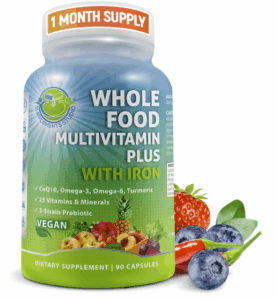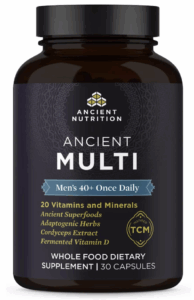Disclaimer: This post is for informational purposes only and does not constitute medical advice. Always consult your healthcare provider before starting new supplements or treatments. This website contains affiliate links, including links to products on Amazon.com. As an Amazon Associate, I may earn a small commission at no additional cost to you from qualifying purchases. I only recommend products that I personally believe in or have researched thoroughly.
May is Celiac Disease Awareness Month—a time to shine a light on this often misunderstood autoimmune condition. Whether you’ve recently been diagnosed, are supporting a loved one, or just want to better understand the gluten-free lifestyle, this guide covers everything from symptoms to long-term care.
What Is Celiac Disease?
Celiac disease is an autoimmune condition where consuming gluten (a protein found in wheat, rye, and barley) triggers an immune response that damages the small intestine lining. This can lead to malabsorption of nutrients, digestive issues, and even systemic complications if left untreated.
What Causes Celiac Disease?
While the exact cause isn’t fully known, celiac disease is linked to genetic factors and environmental triggers. It often runs in families and may be triggered or unmasked after stress or infection.
Symptoms to Watch For:
Celiac disease symptoms vary widely. Some people experience:
- Bloating or gas
- Abdominal discomfort
- Change in bowel habits
- Fatigue and brain fog
- Weight loss or failure to thrive
- Skin rashes (like dermatitis herpetiformis)
- Iron deficiency anemia
- Joint pain or menstrual irregularities
Some may be completely asymptomatic—making diagnosis tricky.
How Is Celiac Disease Diagnosed?
Diagnosis typically involves:
- Serologic blood tests – such as tissue transglutaminase (tTG-IgA)
- Small bowel biopsy – to assess villous atrophy
- Genetic testing (in uncertain cases)
Important: Do NOT go gluten-free before testing, or results can be falsely negative.
Treatment Plan: A Strict Gluten-Free Diet
The only current treatment is a 100% gluten-free diet for life. Even tiny amounts of gluten can trigger symptoms and long-term damage.
That means avoiding:
- Wheat, barley, rye, and spelt
- Most processed foods without a gluten-free label
- Cross-contamination from shared cookware or prep surfaces
Why Compliance Matters: The Dangers of “Just a Little” Gluten
Non-compliance can lead to serious complications, including:
- Malnutrition and osteoporosis
- Infertility
- Neurological issues
- Increased risk of intestinal lymphoma
Even if symptoms seem mild, internal damage can still be occurring—so strict adherence is key.
Supportive Measures: Beyond the Diet
Healing your gut and body takes time. Some patients benefit from:
- A daily gluten-free multivitamin to replace lost nutrients (like B12, D, and iron)
- Bone density screening (especially if diagnosed later in life)
- Regular follow-up with your provider and repeat labs
- Connecting with a registered dietitian specializing in celiac care
Recommended Gluten-Free Multivitamin options:
 Vegan Whole Food Daily Multivitamin with Iron, Methylated Multivitamin for Women and Men
Vegan Whole Food Daily Multivitamin with Iron, Methylated Multivitamin for Women and Men- Ancient Nutrition Multivitamin
Delicious Doesn’t Mean Dangerous: Gluten-Free Cooking Inspiration
Embracing a gluten-free lifestyle doesn’t mean giving up on great food!
Here are some of my favorite cookbooks full of safe, satisfying recipes:
These are game-changers for anyone looking to reclaim joy in the kitchen!
Let’s Talk: Share Your Story
Have you or a loved one been affected by celiac disease? What’s been your biggest challenge—or success—on the gluten-free journey?
Tag me on Instagram @gut_gossip (https://www.instagram.com/gut_gossip) with your favorite gluten-free meal!





